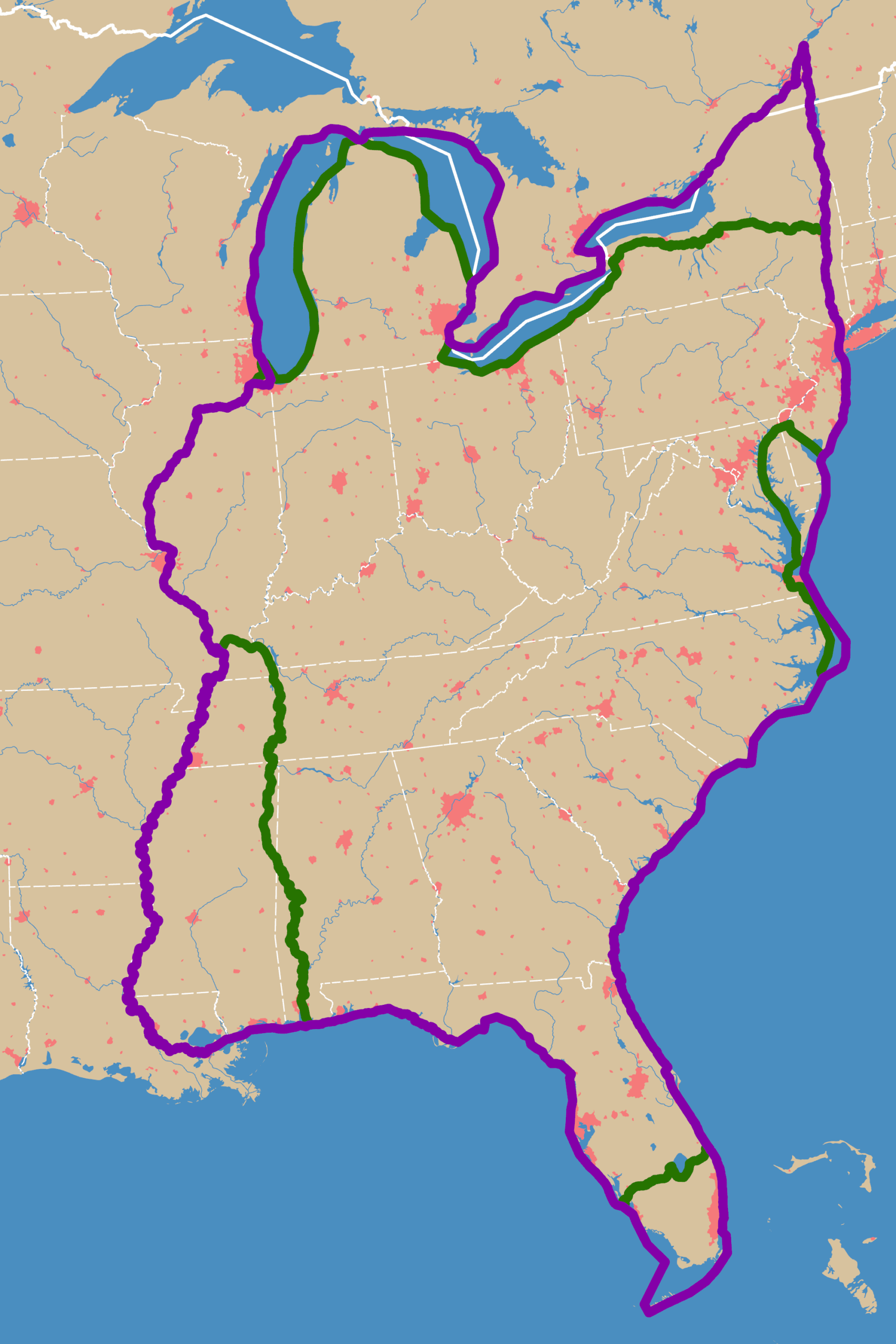The Great Loop: An Overview
By Alecia Croft | Marketing Assistant

Northern Michigan’s maritime community is made up of a vast group of boaters. While some choose to enjoy the shorter routes of the local waterways, others seek bigger adventures. Not for the faint of the heart, the Great Loop takes travelers around the eastern part of North America. Determined boaters make their way along the expansive route, which spans from the freshwaters of the Great Lakes to Florida and back around in one big “loop.”
The Basics
The Great Loop is an approximately 6,000-mile-long waterway journey that often takes the better part of a year to complete, if it is all done at once. Many travelers choose to break up the journey into different sections, carefully planning their trips according to the seasons; some parts of the northern waters are inaccessible when the weather turns cold, and other areas to the south are best to avoid during hurricane season. Those who take on this voyage typically make their way through over one dozen U.S. states; some choose to cruise into Canadian waters as well. The route is truly up to the one at the helm, as there are many ways to plan and navigate this journey. Regardless of whether the trip is taken on as a whole or broken down into several shorter undertakings, experts recommend traveling counterclockwise, so the boat moves with the river currents on the inland waterways.
Considerations
For those who want to achieve the loop over the course of around a year, experienced “loopers” (the honorary name given to those who have completed the journey) recommend traveling through the northern areas in the warm summer months and the southern areas during the wintertime. There are several options and important considerations that must be taken when mapping out one’s travel plans along the loop, such as the size and height of one’s vessel and the ease of navigating through one canal or the other. Some people choose to add on side trips too, extending their “loop” to enjoy places that might not be directly on route.
Starting in the Great Lakes
While one’s home port can be anywhere, here we provide one possible route, beginning at the tip of Michigan, in the Straits of Mackinac. Traveling south on Lake Michigan, boaters navigate to the Illinois Waterway.
Navigating through the Midwest
Travelers then take the route of their choice through Chicago, before navigating along the Mississippi River. The Mississippi River and Ohio Rivers confluence in Cairo, Illinois. Boaters take the Ohio River to Kentucky next, where it converges with the Tennessee River, and follow it to the Tennessee-Tombigbee Waterway (or Tenn-Tom for short) towards Alabama’s Mobile Bay, where they enter the Gulf Coast.
Into the Big Waters of the Gulf
From there, boaters head east, following the Gulf International Waterway. They can choose to take the Okeechobee waterway through Lake Okeechobee towards the east next, and make their way across Florida, or go south to travel around the Keys before heading north up the Atlantic coast. Those who travel across Florida will take the St. Lucie River to the Atlantic Intracoastal Waterway (ICW).
Northbound on the Atlantic Coast
Following the ICW until it ends in Chesapeake Bay, boaters continue traveling north to Delaware Bay and through Cape May in New Jersey, before arriving in New York Harbor, where they navigate to the Hudson River.
Finding the way back to the Great Lakes
From the Hudson River, travelers make their way towards the Erie Canal or Champlain Canal, being mindful of their vessel’s size. They might choose to head towards Canada from there and make their way through the Oswego Canal before cruising into Lake Ontario. Taking the scenic route next, they follow the Trent-Severn Waterway, where they can enjoy utilizing the Big Chute Marine Railway, before heading to the U.S. side of Lake Huron to conclude the journey. Back on the cool sparkling waters of Great Lakes, the travelers are officially “loopers.”
More Information
For anyone interested in venturing out to explore the Great Loop, America’s Great Loop Cruisers’ Association has a plethora of information beyond the basics stated above.
Happy travels.



